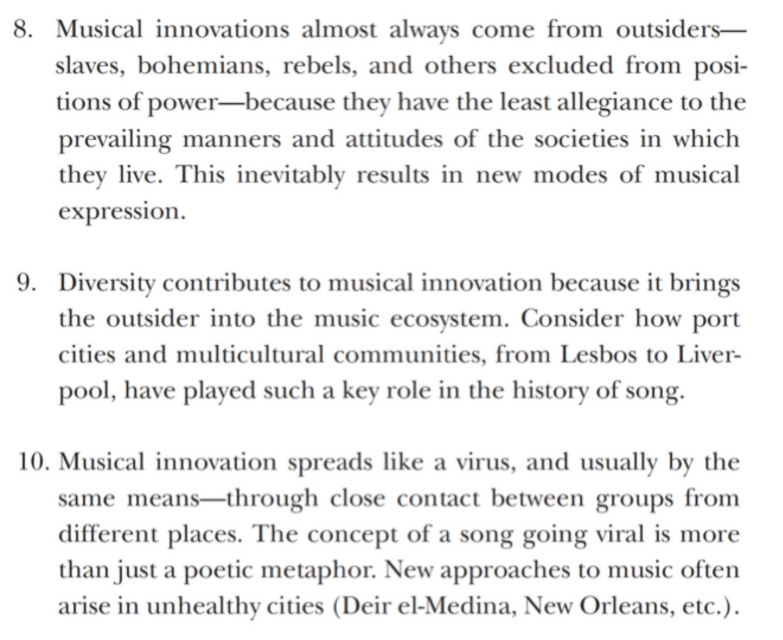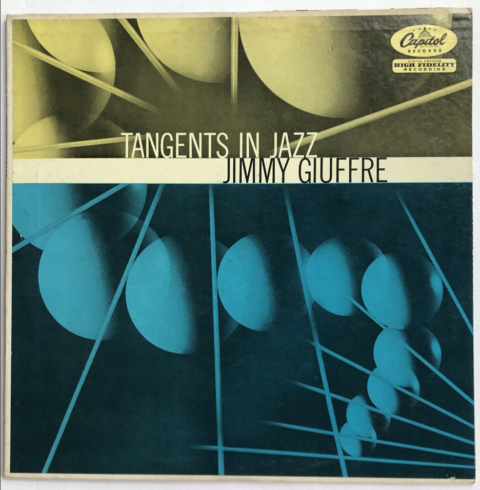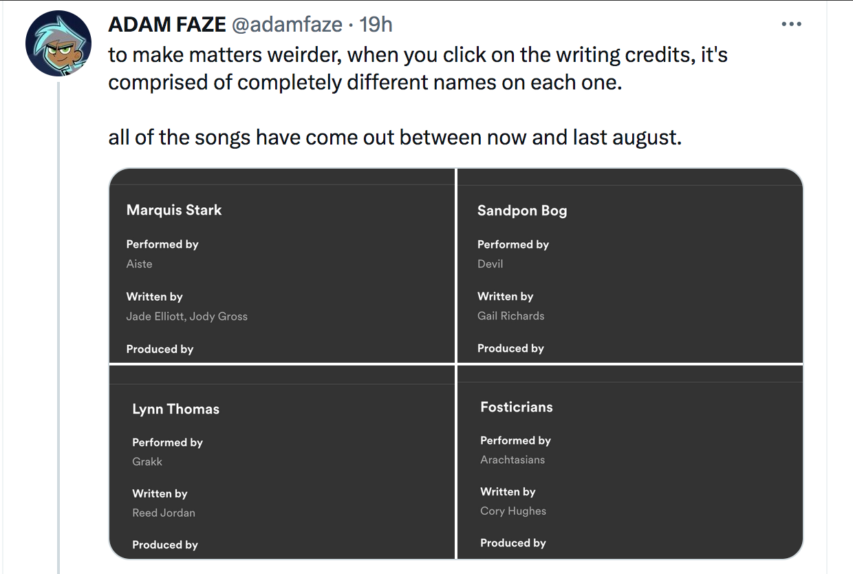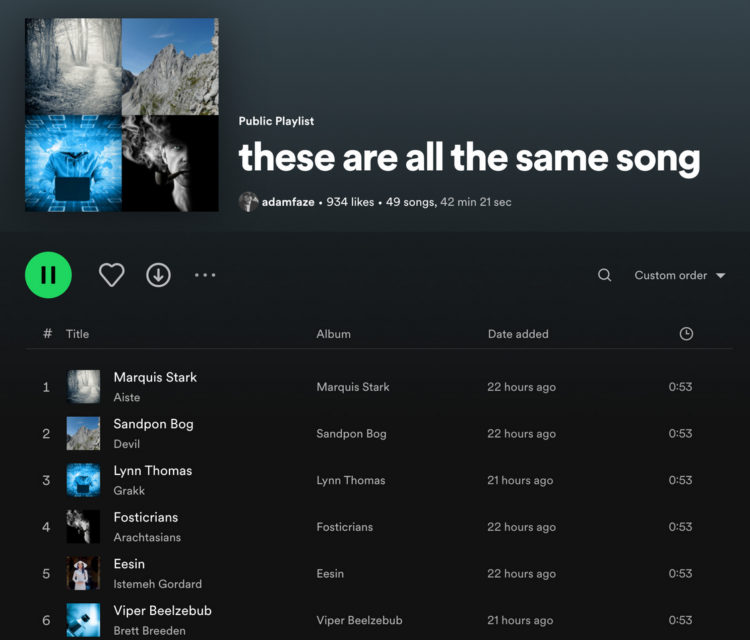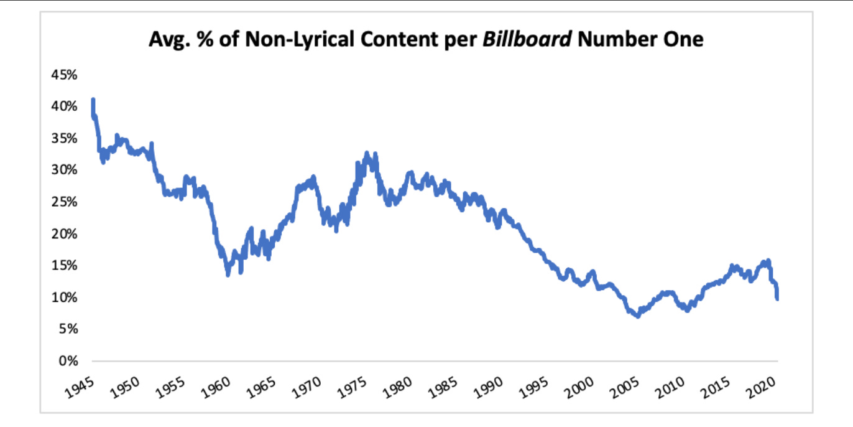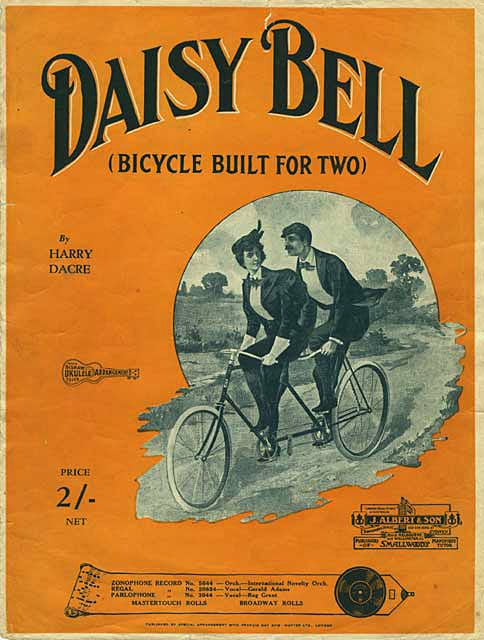Algal the Bard
Published 17 Feb 2023Song composed by R.E.M.
Instruments: Lute-guitar, zitherette, recorder and drums.
(more…)
May 26, 2023
May 25, 2023
QotD: How long does “celebrity” last?
The first warning sign was when they renamed Bob Hope Airport.
Back in the 1940s, Bob Hope was the most popular comedian in the world. He was a radio star. He was a movie star. He would later become a TV star at NBC.
When Hope died in 2003, it made perfect sense to name the Burbank airport after him. After all, his longtime employer NBC was the best known company in Burbank, and Bob Hope had spent a half-century on the network — usually at the top of the ratings.
So the local airport got renamed.
But the only thing that lasts forever in pop culture is the fact that nothing last forever. By 2017, Bob Hope was only a dim memory at NBC, and young passengers flying to SoCal had no idea who he was. So they changed the name to the Hollywood Burbank Airport.
By coincidence this happened almost exactly 80 years after Hope rose to fame — when Paramount signed him to star in the film The Big Broadcast of 1938. In that hit movie, he sang his charming theme song “Thanks for the Memories” — which he kept singing until the end of the 20th century. Not long ago, everybody knew that song.
But then the memories ran dry.
I’ve long believed that 80 years is a typical span of pop culture fame for superstars. I’m referring to the biggest names — the lesser stars burn out in 80 months or 80 weeks or 80 days. But the top draws retain their fame for the entire lifetime of their youngest fans — and given current life expectancies of the US audience, that can’t be much more than 80 years.
We already see the price of Elvis Presley memorabilia starting to drop. The recent Elvis biopic might slow the erosion, but will never bring back the King’s red hot fame of the 1950s. By my measure, Elvismania will be officially dead in the year 2034. That will be the 80th anniversary of his first hit single “That’s All Right”. Almost none of his original audience will still be around to celebrate the anniversary, and that can’t bode well, even for the nostalgia crowd.
Some reputations do flourish after 80 years, but only because the entertainers somehow found an audience outside of pop culture. Louis Armstrong was famous as an entertainer during his lifetime, but enjoys posthumous renown as an artistic and cultural figure. Back in the 1920s, Rudy Vallée sold more records than Armstrong, but never made the transition outside of pop culture.
Ted Gioia, “How Long Does Pop Culture Stardom Last?”, The Honest Broker, 2023-02-23.
May 22, 2023
Dire Straits – “Sultans Of Swing” (Old Grey Whistle Test, 16th May 1978)
Dire Straits
Published 21 Oct 2022Dire Straits performing “Sultans Of Swing” in their first ever TV performance live on BBC’s The Old Grey Whistle Test in May, 1978. This performance took place three days before the UK release of their debut single of the same name.
(more…)
May 8, 2023
Gordon Lightfoot, RIP
Mark Steyn on perhaps the best-known song of the late Gordon Lightfoot:
In November 1975 Lightfoot chanced to be reading Newsweek‘s account of the sinking of a Great Lakes freighter in Canadian waters. He’s a slow and painstaking author, which is one reason he’s given up songwriting – because it takes too much time away from his grandkids. But that day forty-three years ago the story literally struck a chord, and he found himself scribbling away, very quickly:
The legend lives on From the Chippewa on down
Of the big lake they called Gitche Gumee
The lake, it is said Never gives up her dead
When the skies of November turn gloomy …“Gitche gumee” is Ojibwe for “great sea” – ie, Lake Superior – as you’ll know if you’ve read your Longfellow, which I’m not sure anyone does these days. Evidently Hiawatha was on the curriculum back east across Lake Huron in young Gordy’s Orillia schoolhouse. The Gitche Gumee reference may be why, when I first heard “The Wreck of the Edmund Fitzgerald”, I assumed its subject had sunk long before the song was written. In fact, it sank on November 10th 1975 — just a few days before Lightfoot wrote the number. When she’d launched in 1958, the Edmund Fitzgerald was the largest ship on the Great Lakes, and, when she passed through the Soo Locks between Lakes Superior and Huron, her size always drew a crowd and her captain was always happy to entertain them with a running commentary over the loudspeakers about her history and many voyages. For seventeen years she ferried taconite ore from Minnesota to the iron works of Detroit, Toledo and the other Great Lakes ports … until one November evening of severe winds and 35-feet waves […]
That said, human tragedy alone does not make for singable material. The last contact from the SS Edmund Fitzgerald was with another ship, the SS Arthur M Anderson. Yet “The Wreck of the Arthur M Anderson” would have been a far less evocative title. Arthur Marvin Anderson was on the board of US Steel, as Edmund Fitzgerald was on the board of Northwestern Mutual. But there is something pleasingly archaic about the latter name: in fact, as I think of it, I believe the last Edmund I met was one of Gordon Lightfoot’s fellow Canadian singers — the late operetta baritone Edmund Hockridge. Pair “Edmund” to “Fitzgerald”, and you have something redolent of Sir Walter Scott or Robert Louis Stevenson, of shipwrecks off Cornwall or the Hebrides. Perhaps that’s why “The Wreck of the Edmund Fitzgerald” either sounds like an old Scots-Irish folk tune or, alternatively, actually is one. For any IRA members reading this, Bobby Sands, the hunger striker who starved himself to death in a British gaol, wrote in his cell a song called “Back Home in Derry”, about Irish prison deportees en route to Australia and set to a tune remarkably like “The Wreck of the Edmund Fitzgerald”, which it seems unlikely he ever heard.
I see some musicologists claim the tune is in Dorian mode, although it sounds Mixolydian to me (like “The Wexford Carol”). Whichever it is, there is a perfect union between the emphatic melody, the crash of the waves, the antediluvian moniker of Northwestern Mutual’s chairman, and even the obvious filler phrases, so typical of ancient folk songs:
The lake, it is said
Never gives up her dead— which returns far more effectively in the final verse:
Superior, they said
Never gives up her dead— as if Gitchee Gumee is some vast ravening beast. Go back to Orillia, to Fourth Grade in 1947, and the parents listening to Mr and Mrs Lightfoot’s little boy sing “Too-Ra-Loo-Ra-Loo-Ral” as if a bit of synthetic shamrock from an old Tin Pan Alleyman were a genuine Irish lullaby from the mists of Emerald Isle antiquity. That’s the genius of “The Wreck of the Edmund Fitzgerald”: It was born sounding as if it’s a hundred years old. And its agelessness is all the more amazing when you consider that it’s essentially an act of journalism, an adaptation of a news report about something that happened a few days earlier – just the facts, ma’am, with minimal artistic license:
In a musty old hall
In Detroit they prayed
In the maritime sailors’ cathedral …“Maritime sailors” is surely a redundancy, and it’s not a cathedral but the “Mariners’ Church”, which doesn’t quite go the distance syllable-wise. And a parishioner wrote to Lightfoot to say the church isn’t in the least bit “musty”, so these days he finds alternative adjectives.
But that’s all details. The power of the song lies in its storytelling. It immortalized the fate of the freighter not just for the families of the dead, “the wives and the sons and the daughters”, but for everyone, and it made the Edmund Fitzgerald the Titanic of the Great Lakes – except that the Titanic never inspired any song like this. The mournful toll of the lakes in the penultimate stanza is Gordon Lightfoot at his very best:
Lake Huron rolls Superior sings
In the rooms of her ice-water mansion
Old Michigan steams Like a young man’s dreams
The islands and bays are for sportsmen
And farther below Lake Ontario
Takes in what Lake Erie can send her
And the iron boats go As the mariners all know
With the gales of November remembered …The gales of November howl and the waves rise up and devour the ship. And then the gales subside and the placid surface betrays no trace of twenty-nine men, taken deep into the rooms of an ice-water mansion and never to be found.
May 4, 2023
QotD: Gesamtkunstwerk
… it occurs to me that movies aren’t the best example of the Current Year’s creative bankruptcy — music is. Somewhere below, I joked that Pink Floyd’s album The Wall was a modern attempt at a Wagnerian Gesamtkunstwerk, a “total art work”. Wagner thought opera should be a complete aesthetic experience, that a great opera would have not just great music, but a great story in the libretto, great poetry in the lyrics, great painting in the set design, and so on, all of which would combine to something much greater than the sum of its already-excellent parts.
As I said, that’s awfully heavy for an album whose most famous song asks how can you have any pudding if you don’t eat your meat, but it’s nonetheless an accurate description of what Roger Waters was trying to do with the integrated concept album / movie / stage show. Whether or not he knew he was attempting a Gesamtkunstwerk in the full Wagnerian sense is immaterial, as is the question of whether or not he succeeded. Nor does it matter if The Wall is any good, musically or cinematically or lyrically.* The point is, he gave it one hell of a go … and nobody else has, even though these days it’d be far, far easier.
Consider what a band like Rush in their prime would’ve done with modern technology. I’m not a musician, but I’ve been told by people who are that you can make studio-quality stuff with free apps like Garage Band. Seriously, it’s fucking free. So is YouTube, and even high-quality digital cameras cost next to nothing these days, and even laptops have enough processor power to crank out big league video effects, with off-the-shelf software. I’m guessing (again, I’m no musician, let alone a filmmaker), but I’d wager some pretty good money you could make an actual, no-shit Gesamtkunstwerk — music, movie, the whole schmear — for under $100,000, easy. You think 2112-era Rush wouldn’t have killed it on YouTube?
I take a backseat to no man in my disdain for prog rock, but I have a hard time believing Neal Peart and the Dream Theater guys were the apex of rock’n’roll pretension. I realize I’ve just given the surviving members of Styx an idea, and we should all be thankful Kilroy Was Here was recorded in 1983, not 2013, because that yawning vortex of suck would’ve destroyed all life in the solar system, but I’m sure you see my point.** Why has nobody else tried this? Just to stick with a long-running Rotten Chestnuts theme, “Taylor Swift”, the grrl-power cultural phenomenon, is just begging for the Gesamtkunstwerk treatment. Apparently she’s trying real hard to be the June Carter Cash of the New Millennium™ these days, and hell, even I’d watch it.***
The fact that it hasn’t been attempted, I assert, is the proof that it can’t be done. The culture isn’t there, despite the tools being dirt cheap and pretty much idiot proof. Which says a LOT about the Current Year, none of it good.
* The obvious comment is that Roger Waters is no Richard Wagner, but that’s fatuous — even if you don’t like Wagner (I don’t, particularly), you have to acknowledge he’s about the closest thing to a universal artistic genius the human race has produced. It’s meaningless to say that Roger Waters isn’t in Wagner’s league, because pretty much nobody is in Wagner’s league. And philistine though I undoubtedly am, I’d much rather listen to The Wall than pretty much any opera — I enjoy the symphonic bits, but opera singing has always sounded like a pack of cats yodeling to me. I’m with the Emperor from Amadeus: “Too many notes.”
** If you have no idea what I’m talking about, then please, I’m begging you, do NOT go listen to “Mr. Roboto.” Whatever you do, don’t click that link …
… you clicked it, didn’t you? And now you’ll be randomly yelling “domo arigato, Mister Roboto!!” for days. You’ll probably get punched more than once for that. Buddy, I tried to warn you.
*** Anthropological interest only. I know I’m in the distinct minority on this one, but she never turned my crank, even in her “fresh-scrubbed Christian country girl” stage. Too sharp featured, and too obviously mercenary, even back then.
Severian, “More Scattered Thoughts”, Rotten Chestnuts, 2020-10-13.
May 2, 2023
QotD: The musical importance of the city of Córdoba
Which city is our best role model in creating a healthy and creative musical culture?
Is it New York or London? Paris or Tokyo? Los Angeles or Shanghai? Nashville or Vienna? Berlin or Rio de Janeiro?
That depends on what you’re looking for. Do you value innovation or tradition? Do you want insider acclaim or crossover success? Is your aim to maximize creativity or promote diversity? Are you seeking timeless artistry or quick money attracting a large audience?
Ah, I want all of these things. So I only have one choice — but I’m sure my city isn’t even on your list.
My ideal music city is Córdoba, Spain.
But I’m not talking about today. I’m referring to Córdoba around the year 1000 AD.
I will make a case that medieval Córdoba had more influence on global music than any other city in history. That’s probably not something you expected. But even if you disagree — and I already can hear some New Yorkers grumbling in the background — I think you will discover that the “Córdoba miracle,” as I call it, is an amazing role model for us.
It’s a case study in how communities foster the arts — and in a way that benefits everybody, not just the artists.
[…] a thousand years before New Orleans spurred the rise of jazz, and instigated the Africanization of American music, a similar thing happened in Córdoba, Spain. You could even call that city the prototype for all the decisive musical trends of our modern times.
“This was the chapter in Europe’s culture when Jews, Christians, and Muslims lived side by side,” asserts Yale professor María Rosa Menocal, “and, despite their intractable differences and enduring hostilities, nourished a complex culture of tolerance.”
There’s even a word for this kind of cultural blossoming: Convivencia. It translates literally as “live together.” You don’t hear this term very often, but you should — because we need a dose of it now more than ever. And when scholars discuss and debate this notion of Convivencia, they focus their attention primarily on one city: Córdoba.
It represents the historical and cultural epicenter of living together as a norm and ideal.
Even today, we can see the mixture of cultures in Spain’s distinctive architecture, food, and music. These are both part of Europe, but also separate from it. It is our single best example of how the West can enter into fruitful cultural dialogue with the outsider — to the benefit of both.
Ted Gioia, “The Most Important City in the History of Music Isn’t What You Think It Is”, The Honest Broker, 2023-01-26.
April 27, 2023
QotD: The unexpected sources of musical innovation
First, I need to provide some background on the sources of musical innovation. Over the course of three decades of research into this matter, I kept encountering new styles of song emerging in unexpected places — but these locations always had something in common.
These epicenters of musical innovation are always densely populated cities where different cultures meet and mingle, sharing their distinctive songs and ways of life. This intermixing results in surprising hybrids — new ways of making music that nobody can foresee until it actually happens in this hothouse environment.
New Orleans provides a great example. Around the time jazz originated in New Orleans, it was the most diverse city in the world — an intense intermixing of French, Spanish, African, Caribbean, Latin American, and other cultures. And the mixture was enhanced by the huge number of travelers and traders who came to the region because of the prominence of the Mississippi River as a business and distribution hub.
Here’s how I described this process in the appendix to my book Music: A Subversive History, where I shared 40 precepts on the evolution of human songs.
I wish I had time to defend these assertions here with empirical evidence. But we don’t have the space to do that. Let me say, however, that these statements are amply documented and supported with dozens of examples and case studies in the course of that book.
Ted Gioia, “The Most Important City in the History of Music Isn’t What You Think It Is”, The Honest Broker, 2023-01-26.
April 24, 2023
Unconventional hiring practices
In The Honest Broker, Ted Gioia recounts tracking down Jazz saxophonist Jimmy Giuffre to interview him for a chapter in the book he was writing and discovering things about team-building that he hadn’t learned at Stanford Business School:
Back when I interviewed Jimmy Giuffre, I was gigging constantly and the format was obvious. The best option was piano, bass, and drum with at least one horn. If I didn’t have enough money to cover that, I brought just a trio — piano, bass, and drums — to the gig. If I couldn’t afford that, I did just piano and bass. And if cash was really tight, I opted for solo piano.
And which players did I hire?
Back then, I wanted to play with the best of the best. I kept careful tabs on all the jazz musicians in the greater San Francisco area, and wanted to play with all the top cats. Even if I didn’t know the musician, I’d make a cold call and try to hire them, provided I could afford it. If I got turned down, I went to the next name on my list.
Didn’t everybody do it that way?
Not Jimmy Giuffre. He explained that musicians played better when they were happier. Now that was a word I’d never heard in organizational theory class.
Giuffre continued to spell it out for me — surprised that I couldn’t figure this out for myself. Didn’t I know that people are always happier when they were with their friends? So group productivity is an easy problem to solve.
In other words, if my three best buddies played bongos, kazoo, and bagpipe, that should be my group.
When I heard this, I thought it made no kind of sense. They don’t call it “show friends” — they call it show business. I couldn’t imagine following Giuffre’s advice.
But over the years, I’ve thought a lot about what Jimmy Giuffre said about group formation—which is not only unusual for a music group but also violates everything I was taught back at Stanford Business School.
[…]
Can I turn this into a rule? And, even more to the point, could you apply this to other settings? Could you start a business with this approach?
That seems like a recipe for disaster, at least at first glance.
But I now think even large corporations could benefit from a dose of Jimmy Giuffre’s thinking. One of the biggest mistakes in hiring practices, as handled by HR (Human Resources) professionals in the current day is an obsession with the “required qualifications” for the job. They won’t even give you an interview unless you mention the right buzz words on your resume. But the best people take unconventional paths, and this checklist approach will exclude precisely those individuals.
(I’ve even heard of a scam for getting interviews — which involves copying and pasting the job description word-for-word at the bottom of your resume. This apparently rings all the bells in their algorithms and gets you moved to the top of the candidate list.)
Giuffre’s quirky theory gets straight to the heart of the problems with contemporary society outlined by Iain McGilchrist in his book The Master and His Emissary. That book is ostensibly a study of neuroscience, but is actually a deep-thinking critique of institutions and cultural biases. The best decisions. McGhilcrhist shows, are made by holistic thinkers who can see the big picture, but the system rewards the detail orientation of people who manage with checklists and jump through all the bureaucratic hoops.
Yet I’ve seen — and I’m sure you have too — amazing people whose skill set can’t be conveyed by their resume. Not even close. I’ve worked alongside visionaries whose education ended with high school, but have ten times the insight and ability as their colleagues with graduate degrees and fancy credentials.
That’s why Duke Ellington is such a great role model for running an organization. He hired people because of their musical character, rather than their sheer virtuosity or technical knowledge. And he certainly paid no attention to formal degrees. I wouldn’t be surprised to learn that Duke went through decades of hiring for his band without looking at a single resume.
That piece of paper wouldn’t have told him a single thing he needed to know.
For all those reasons, I no longer dismiss Jimmy Giuffre’s peculiar views on group formation. I’d recommend them myself — maybe even especially in groups where no music is made.
April 20, 2023
It’s not your imagination, you really did just hear that song again … and again … and again
Ted Gioia on some sort of scam-like activity going down on Spotify and other large web platforms:
Adam Faze kept hearing the same song on Spotify over and over again.
Such things aren’t unusual. Hit songs get played repeatedly—although this one seemed more annoying than most.
But in this case, something even more bizarre was happening.
When Adam looked to see the name of the song, it was always different. The titles were a wild assortment—almost as if a random word generator had been used to pick them:
- “Trumpet Bublefig”
- “The Proud Dewdrop Amulet”
- “Thorncutter”
- “Viper Beelzebub”
- “Whomping Clover”
- Etc. etc.
But the music was always the same.
Even stranger, the artist was also different in each instance. And if you clicked on the writer credits, those were all different too.
How could the same track be attributed to dozens of different musicians? How could the same song be written by dozens of different composers?
Adam started compiling a playlist, and adding each new iteration of this song when he found it. When he got to 49 versions, he shared the playlist on social media. “I’ve officially stumbled upon the weirdest thing I’ve ever seen”, he announced.
A Twitter user, alerted by this, quickly discovered another 10 iterations of the same song. This banal tune was everywhere. The use of multiple aliases made it difficult to gauge the full extent of the deception, but Spotify was pushing this track so aggressively that it was impossible to hide the charade they were playing.
When asked how it was possible to find so many examples, Adam replied: I’m completely serious when I say it was starting to be every other song after a while.”
The song itself is just 53 seconds. And you’re glad when it’s over, because this tune is a loser — almost a Frank-Ocean-at-Coachella level of bad. Even call centers have better taste in their on-hold music.
April 11, 2023
The amplifier may have been the key technological innovation that let vocalists and guitarists become stars
Chris Dalla Riva, guest-posting at Ted Gioia’s Honest Broker, considers how instrumental hits used to be far more popular before (among other factors) microphone technology let vocalists compete with orchestras and guitar amplifiers let the strings dominate the pop music market:
Clarinet players aren’t sex symbols. I say this with no disrespect for those that play the single-reeded woodwind. But if you asked a random person on the street to name a clarinet player, I suspect most people couldn’t come up with one, let alone one known for their good looks. Then again, this isn’t a particular indictment of clarinetists. If you asked that same person to name a sexy musician, I’d bet a large sum of money they’d name a vocalist.
This wasn’t always the case, though. In Kelly Schrum’s book Some Wore Bobby Sox: The Emergence of Teenage Girls’ Culture, 1920-1945, she notes that in high school yearbooks in the 1930s some students expressed a passion for “Benny Goodman while other girls had a ‘weakness’ for Artie Shaw or were classified as Glenn Miller ‘fanatics’, faithful fans of Tommy Dorsey, or ‘Happy while listening to Kay Kyser’. Cab Calloway, Xavier Cugat, and Harry James were also popular favorites.” Of those musicians, only Calloway was a singer. Goodman, Shaw, and Kyser played the clarinet. Miller and Dorsey played the trombone. Cugat played violin. James played trumpet.
Given that our contemporary musical world is dominated by vocalists, this seems bizarre. It feels like if you have a musical group it must be centered around the vocalist. If we measure the average percent of instrumental content per Billboard number hit between 1940 and 2021, we see demonstrable evidence for not just the decline of the instrumental superstar but the instrumentalist generally, with the sharpest declines beginning in the 1950s and the 1990s.
NOTE: Data from July 1940 to August 1958 comes from Billboard‘s Best Sellers in Stores chart. After August 1958, Billboard deprecated that chart in favor of the Hot 100, which initially aggregated sales, jukebox, and radio data. The Hot 100 remains the premiere pop chart, though it has come to include many more sources, like streams and digital downloads. The above displays a 50-song rolling average.
What’s going on here? How could throngs of high schoolers long for the clarinet-wielding Artie Shaw 80 years ago when most teenagers today would struggle to name a musician who isn’t also a singer. I believe it comes down to four factors: improved technology, the 1942 musicians’ strike, WWII, television, and hip-hop.
Improved Technology
In the VH1-produced documentary The Brian Setzer Orchestra Story, Dave Kaplan, Setzer’s manager, recounts a conversation he had with Setzer before assembling a guitar-fronted big band in the 1990s: “Nobody had ever fronted a big band with an electric guitar … I asked Brian, ‘Why wouldn’t somebody have tried it?’ [Setzer replied,] ‘Well there weren’t amps.'” Albeit a simplification, Setzer’s quip is pretty accurate.
While there were some famous guitar players among the big bands of the first half of the 20th century, we don’t see the guitar become a driving force in popular music until amplification improved. This was not only a boon for the guitarists but also vocalists. Unlike brass and wind instruments, you can sing while you play the guitar. Thus, it’s not shocking that the rise of the guitar coincided with the rise of the vocalist.
But it wasn’t just guitar amplification technology that was vital. It was also microphone technology. Again, microphones had to improve so vocalists could compete with the cacophony of a loud band. On top of this, recording had to change to capture more subtlety in the human voice.
April 7, 2023
Stormtroopers – The German Elite of WW1 – Sabaton History 119
Sabaton History
Published 6 Apr 2023By the middle of the Great War, several nations had begun to experiment with shock troops, and Germany was one of them. The Sturmtruppen were a revolution on the battlefield, for sure, but what did they actually do? What equipment did they carry and use? What were the men actually like? Today we’ll look at all that.
(more…)
March 28, 2023
Computers and music, from 1961 to 2001
Ted Gioia explains the deep history behind the scene in the movie 2001: A Space Odyssey where H.A.L. sings a song:
Not many people could afford an IBM 7094 computer back in the early 1960s — a typical installation cost $3 million. That’s the equivalent of around $20 million in purchasing power today. Over the course of the decade, fewer than 300 were built.
You didn’t get much computing power for that hefty price tag, at least by current-day standards. But if you wanted a machine that did complex or rapid math, you had few other options. The 7094 could handle 250,000 additions or subtractions in just one second. A whole room of accountants couldn’t keep up with it.
But addition and subtraction aren’t very sexy. So someone got the bright idea of teaching the IBM 7094 to sing. That’s why John L. Kelly Jr., Carol Lockbaum, and Lou Gerstman of Bell Labs, in Murray Hill, New Jersey, began working in 1961 on this pioneering computer music project.
Digital music wasn’t an entirely new development, even in those distant days, but singing presented completely different challenges, requiring breakthroughs in speech synthesis. But Bell Labs — then the in-house research arm of AT&T (it’s now part of Nokia) — had more expertise in that area than any other organization in the world.
The Bell Labs team needed a song for their experiment. They decided on “Daisy Bell” — also known as “Bicycle Built for Two” — composed by British tunesmith Harry Dacre in 1892.
The idea for the song came to Dacre when he visited the US and found, to his surprise, that the customs officials had imposed a tariff on his bicycle. A friend quipped that he was lucky it wasn’t a bicycle with two seats, or the duty might have been double. The end result was Dacre’s most successful song ever.
[…]
Even back in the early 1960s, this tune didn’t have much hipness potential. But at least the melody was simple, well-known, and no longer protected by copyright. (That said, I would love to watch a jury in 1961 debate computer music rights.)
For the instrumental parts of the song, the Bell Labs team relied on contributions from Max Matthews, who had created a breakthrough sound-generating program called MUSIC back in 1957. In those ancient analog days, he had hooked up his violin to an IBM 704, and was thus the first performer in history to transfer live music to a computer for synthesis and playback.
Miles Davis – “Concierto de Aranjuez: Adagio”
Miles Davis
Published 23 Mar 2021“Concierto de Aranjuez: Adagio” by Miles Davis
(more…)
March 26, 2023
Billy Joel – “The Downeaster Alexa“
Billy Joel
Published 3 Oct 2009In 1989, Billy Joel released his album Storm Front, a successful album that hit #1 on the Billboard 200 charts and went quadruple platinum. Watch the official music video for “The Downeaster Alexa“, about the hard lives of Long Island fishermen.
(more…)
QotD: Bing Crosby meets the modern jazz musicians
The story involves Bing Crosby in the final years of his life. He was invited to sing at an event, probably for a charity or cause, and the host enlisted some young progressive jazz musicians to accompany the famous singer. The band members weren’t impressed by this aging star, who had made his reputation back in the 1920s, and decided to throw Crosby off his game.
When Bing showed up, he greeted them in his typical laidback manner, and told them he would sing some familiar old songs. But when the performance started, these young jazz players threw in every arcane substitute chord change and rhythmic displacement they could think of, further spicing up their accompaniment with Coltrane modal fills and bits of polytonality.
Much to their frustration, nothing they did that evening disrupted Bing in the least. This old, balding pop singer navigated effortlessly through every one of their advanced harmonies, never faltering or showing the slightest degree of discomfort. Even more infuriating, Bing maintained the relaxed and unflappable delivery that was a Crosby trademark. As far as the audience could tell, he was just as happy-go-lucky as ever, and maybe he was — after all, Crosby had learned the ropes as a young man alongside Bix Beiderbecke, who was as unconventional and unpredictable as any musician from the early 20th century.
When the performance was all done, the musicians expected to get chewed out by Crosby backstage. Instead, Bing shook their hands, and thanked them with great warmth. He said how “cool it was to play with these young cats,” and expressed his sincere desire that they might do so again in the future.
Ted Gioia, “Four Perspectives on Bing Crosby”, The Honest Broker, 2022-12-23.


